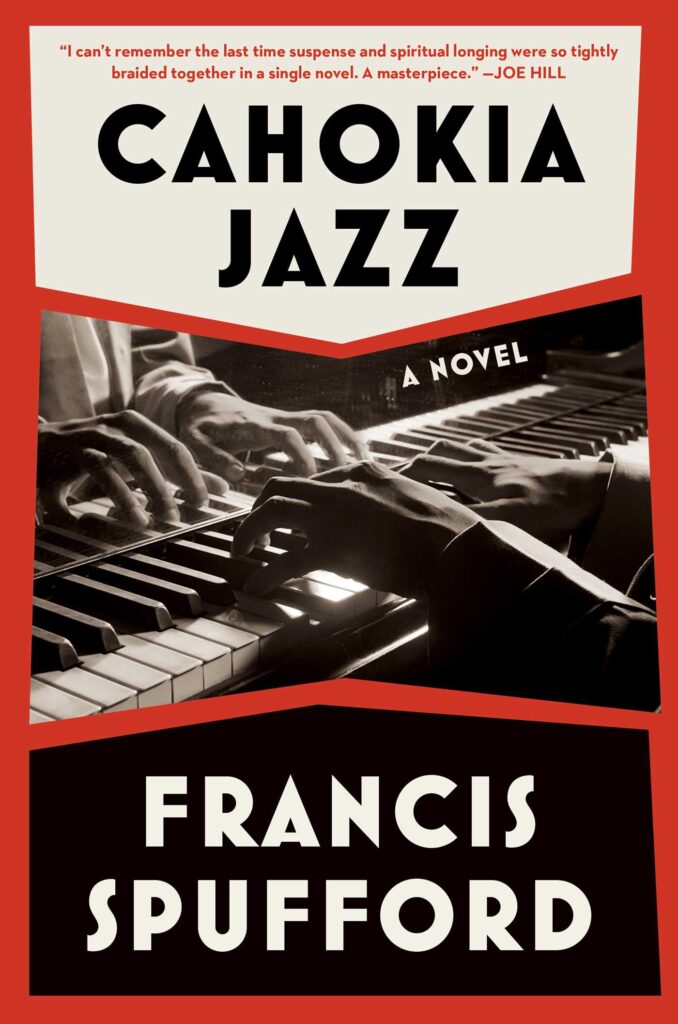Dear reader, allow me to pose a question: How much effort are you willing to invest in immersing yourself in a new novel? Are you intrigued by the prospect of delving into a speculative world that mirrors our own in frustratingly close ways? Does the idea of exploring an imaginary city crafted with the meticulous detail of a high fantasy novel entice you? Are you eager to encounter new forms of governance and religious factions? Are you comfortable with encountering foreign languages interspersed throughout the narrative? What about themes like the Klan, a Red scare, a budding F.B.I., and a love story? And do you have a penchant for jazz music? Furthermore, do you desire all of these elements to be interwoven into the fabric of a detective novel?
Your responses to these inquiries will determine your level of engagement with Francis Spufford’s latest literary offering, “Cahokia Jazz.”
In “Cahokia Jazz,” Spufford unveils an alternate America where the strain of smallpox introduced during the Columbian Exchange proves less lethal, bestowing immunity post-infection and sparing the Native population from devastation.
Set in the 1920s, the narrative unfolds within a reimagined version of the ancient Indigenous city of Cahokia. While in reality, Cahokia lies abandoned, its remaining mounds now designated as a UNESCO site; in Spufford’s alternate history, Cahokia burgeons into a bustling 20th-century metropolis inhabited by Native, white, and Black citizens—referred to as takouma, takata, and taklousa in the novel’s lexicon. The takouma, converted to Catholicism by a Jesuit priest in the early 17th century, form an integral part of the Union, though the nation at large seems indifferent to its statehood. (The mystery of how these Native peoples managed to evade white America’s genocidal tendencies remains curiously absent from the plot.)
One wintry night, Detective Joe Barrow, a half-takouma and half-taklousa, along with his takata partner, Phin Drummond, are summoned to investigate a corpse discovered atop the Land Trust building in Cahokia. The victim, Fred Hopper, a takata with Klan affiliations, appears to have been murdered in a ritualistic manner reminiscent of ancient Aztec sacrifices. Is this a genuine ritualistic homicide, or a political ploy designed to frame the city’s Catholic takouma as idol-worshipping savages, in a convoluted attempt to undermine them in the eyes of white America? Unraveling this mystery will necessitate a 400-page journey through every nook and cranny of the town.
Barrow, a newcomer to Cahokia and unfamiliar with the Native language (a fact underscored excessively), traverses every inch of the city, from the unwelcoming takata shanties to the predominantly takata Union Club, where he is met with the same lack of welcome. He delves into the case amidst the smoky ambiance of jazz clubs, engages in heated discussions with the city’s takouma leaders, faces gunfire from Tommy guns, and flees a Klan gathering. Along the way, he grapples with the city’s murky racial alliances, questions the ethics of his fellow officers, and inevitably finds himself ensnared in a web of romance—albeit with the wrong woman.
In “Cahokia Jazz,” Spufford masterfully intertwines elements of noir, political intrigue, and cultural exploration, inviting readers on a captivating journey through the intricate tapestry of an alternate America.
Unavoidably, a detective noir set within a speculative American province teeming with an Indigenous populace, and featuring a half-Indigenous detective, inevitably evokes Michael Chabon’s “The Yiddish Policemen’s Union” — a remarkable book that occasionally stumbles over its meticulous details. (To cushion this comparison, Spufford tips his hat to Chabon’s Sitka early on.) However, the intricate political landscape here owes more to James Ellroy’s hyper-stylized Underworld U.S.A. trilogy than to Chabon.
Immersing oneself in Ellroy’s work can be exhilarating, disorienting, and at times bewildering, yet the Demon Dog sustains his tightrope walk by tethering his gritty, frenzied narratives to real-life events — the Bay of Pigs, the J.F.K. assassination. You can lose yourself in the frenetic prose or the labyrinthine plot, at your discretion, without needing to constantly reevaluate basic historical truths. This is a luxury that Spufford does not afford himself. Spufford’s intricately envisioned world demands continual construction, which, unfortunately, suffocates the narrative. Before we can grasp each stride of Barrow’s investigation, we must absorb another facet of this city, governed by political figures and two spiritual leaders: the Man of the Sun (a wealthy Harvard-educated takouma with a Boston Brahmin accent) and his niece, the Moon — a Jazz Age moll with the ability to mend wounds and shatter hearts.
The realm of Cahokia is intricate and multifaceted, spanning racial, political, and spiritual dimensions. Spufford adeptly navigates the emotional tug-of-war between the native Cahokian religion and imposed Catholicism. Regrettably, these intricacies overshadow the investigation, often conveyed in a rapid-fire exposition that renders Barrow almost naïve.
“Cahokia Jazz” embodies duality, which is both its strength and weakness. No character is precisely who they appear to be, a fact simultaneously captivating and exasperating. There are cops aspiring to be jazz virtuosos, tabloid scribes who moonlight as poets, and poets who moonlight as scientists. The Indigenous populace straddles the line between Catholicism and their native beliefs. Most antagonists aren’t entirely villainous, aligning them with the archetypes of canonical noir. However, the noir itself lies buried beneath layers of ceremonial attire, leaving readers feeling as if they are excavating one of Cahokia’s actual mounds. And that, my friend, may simply be too laborious for my tastes.

